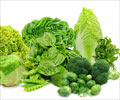Several genes that may confer resistance to the downy mildew pathogen has been discovered.

‘Spinach genome sequence and transcriptome variants from RNA’s of 120 cultivated and wild spinach plants can be used to breed spinach with better disease-resistance, higher yield and better quality.’





"The spinach genome sequence and transcriptome variants developed in this study provide a wealth of valuable information that can be used to breed spinach with better disease-resistance, higher yield and better quality," asserted Zhangjun Fei, the project's lead researcher from BTI. Spinach, which is native to central Asia, is now cultivated worldwide, with a reported annual production of 24.3 million tons in 2014. Since it was first domesticated, gardeners and breeders have improved many agronomically important traits, such as leaf quality and nutrition, and over time these improvements have re-shaped the spinach genome.
In turn, breeders today can use genomic information to speed up improvements, which is especially important for combating significant diseases, like downy mildew.
Known as the 'late blight' of spinach, the downy mildew disease has devastated crops throughout California, and has recently popped up in Upstate New York. Armed with a better understanding of the spinach genome, the researchers have identified several genes that may confer resistance to the downy mildew pathogen.
Once identified in a resistant variety of spinach, such genes could be quickly transferred to other, possibly more nutritious varieties, boosting their immune systems to fight this disease while still maintaining marketable traits.
Advertisement
In many cases, it gets forced through a bottleneck of genetic changes necessary for cultivation, creating a very different plant from that which was first brought out of the wild. A great example is the comparison of maize (corn) to its ancestor, teosinte.
Advertisement
This was great news because it means there is still much room for spinach improvement, but it also made it tougher to pinpoint genomic markers that could speed up the breeding process.
Nonetheless, the team identified many regions in the genome directly attributable to the domestication process, that could be possibly linked to valuable traits, such as bolting, leaf number, and stem length.
Source-Eurekalert















